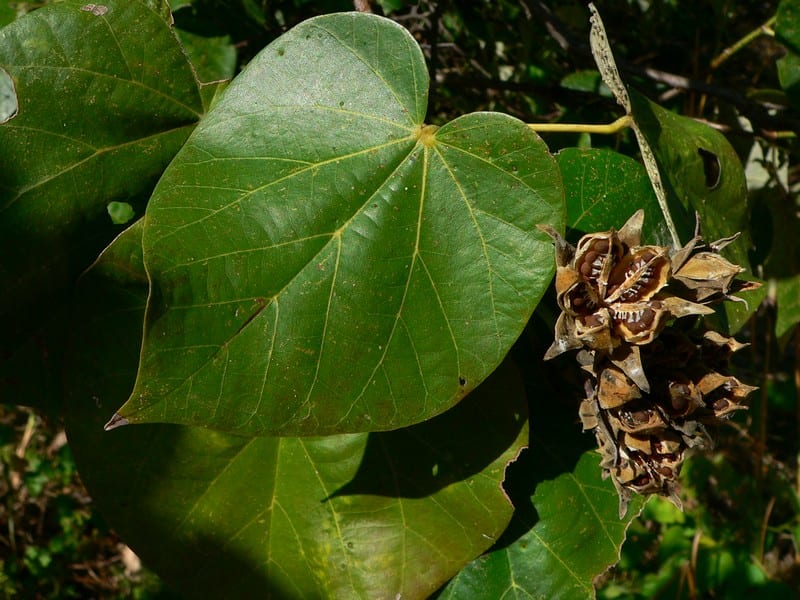Cotton tree, cottonwood
Hibiscus tilliaceus, Fam. Malvaceae








A small to medium spreading tree of the seashore and saline estuaries. It often has low interlaced branches which form a barrier to the beach. A useful tree for beach-side plantings as it is salt spray tolerant and may be pruned to shape. The close-grained timber is easily worked and takes a good polish.
| Weed Category: | |
| Weed: | No |
| Form or habit: | Small tree, Med tree |
| Family: | Malvaceae |
| Leaf: | Simple Alternate Long-stalked, broadly heart-shaped, about 16 x 18cm, palmately veined, dark green above and greyish beneath due to a covering of light-coloured star-hairs. |
| Flower conspicuous: | Conspicuous |
| Flower colour: |
Yellow, Red |
| Flower description: | Large yellow, five petalled flowers with maroon centers, usually turn reddish before falling. |
| Fruit conspicuous: | Conspicuous |
| Fruit colour: |
Brown |
| Fruit: | Dry |
| Fruit description: | Brown, hairy, five valved rosella-like capsules, about 2cm in diameter, enclosed within persistent calyx lobes and containing numerous small dark, wedge shaped seeds. |
| Habitat: | Beach scrub, beach strand, coastal dune, littoral rainforest, mangroves, saltmarsh, wetland. |
| Distribution | Northern Territory, Queensland and New South Wales south to Port Macquarie. Also South East Asia. |
| Food source for: | Main food plant of the sap sucking hibiscus harlequin bug. |
| Toxicity: | No toxicity known |
| Origin: | Australia |
| Notes: | |
| Information sources: | Melzer R. & Plumb J. (2007) Plants of Capricornia., Society for Growing Australian Plants. Mackay Branch. (1989). One hundred and one trees of Mackay. |